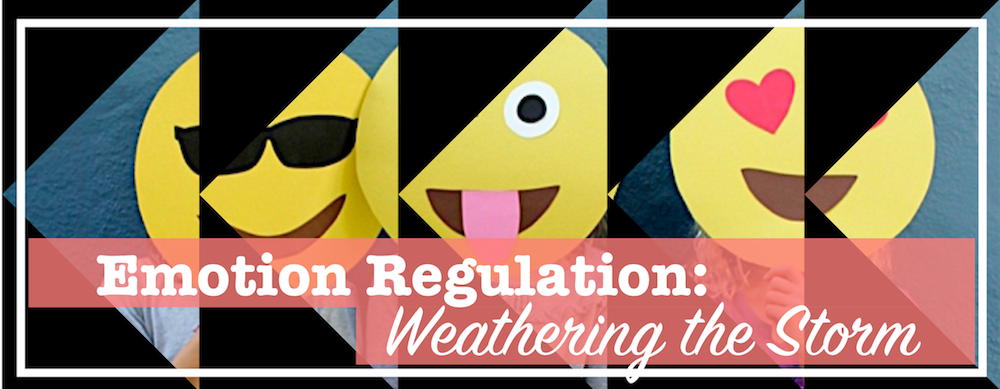It may sometimes seem like emotions come up out of the blue. Maybe your child arrives home from school, seemingly quiet and content, only to explode in anger at you moments later. Or maybe you suddenly feel like your patience is razor thin and that at any given time, you may snap into a fit of tears or rage. Emotions and their accompanying expressions actually develop over time, fueled largely by the buildup of small, seemingly insignificant events. If emotions (whether that be happiness, sadness, anger, or whatever) are allowed to run free and burst forth whenever they please, things can get interesting. As a parent, you may feel stressed when your child’s emotions are through the roof or maybe even inappropriate for a time (say, at a formal dinner setting). Emotion regulation, therefore, is essential to keeping the peace and weathering the storm at home, in school, and everywhere in between.
There are two primary ways to look at regulating emotions. One can either be 1) accept and integrate, or 2) suppress and deny an emotional experience. If your child continues to reject, turn away from, hide, or label their emotions as “bad,” things will only grow more stressful for you as the parent. This suppressing of emotions just pushes the pain, joy, or worry, deeper, leading to further confusion, frustration, and ultimately, a more intense explosion. However, if your child is encouraged to share what they are feeling, accept the way things are now (e.g., “I can tell that I am angry, and that is OK”), and further integrate how they are feeling into the present moment, more stability is sure to follow. The practice of emotion regulation requires some effort. Your child needs to grow increasingly aware of their emotions (what they look like and what the “triggers” of each emotion are) and when it is appropriate to yell out, jump around for joy, or sit in silence. You can model this for your kids by practicing self-control in front of them. Pay attention to how you address your spouse or significant other about stressful topics. Display healthy boundaries in the home, like respecting a family member when they need space, or communicating your anger in a calmer tone than what you are used to.
Think of emotions as the various parts of your car. Your turn directional is always there, but not always “on”; similarly, anger might be constantly below the surface for your child, but they need not wear it on their sleeve at all times. Your engine needs maintenance and regular fluid changes; likewise, your child’s emotional state needs consistent “check-ins” and processing time. Sit down with him or her and help them find the words to describe how they are feeling. Reassure them that many emotions may all be present at once – and that this is perfectly normal. Help your child practice self-control and emotion regulation by modeling when it is OK to let emotions fly. Most importantly, take the time to encourage your child that whatever they are feeling will not last forever. It will pass, and they must find a way to weather that storm.

